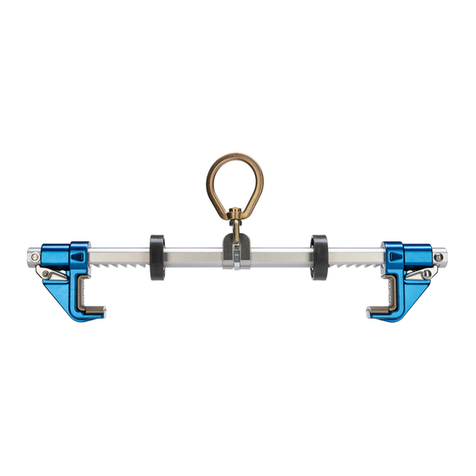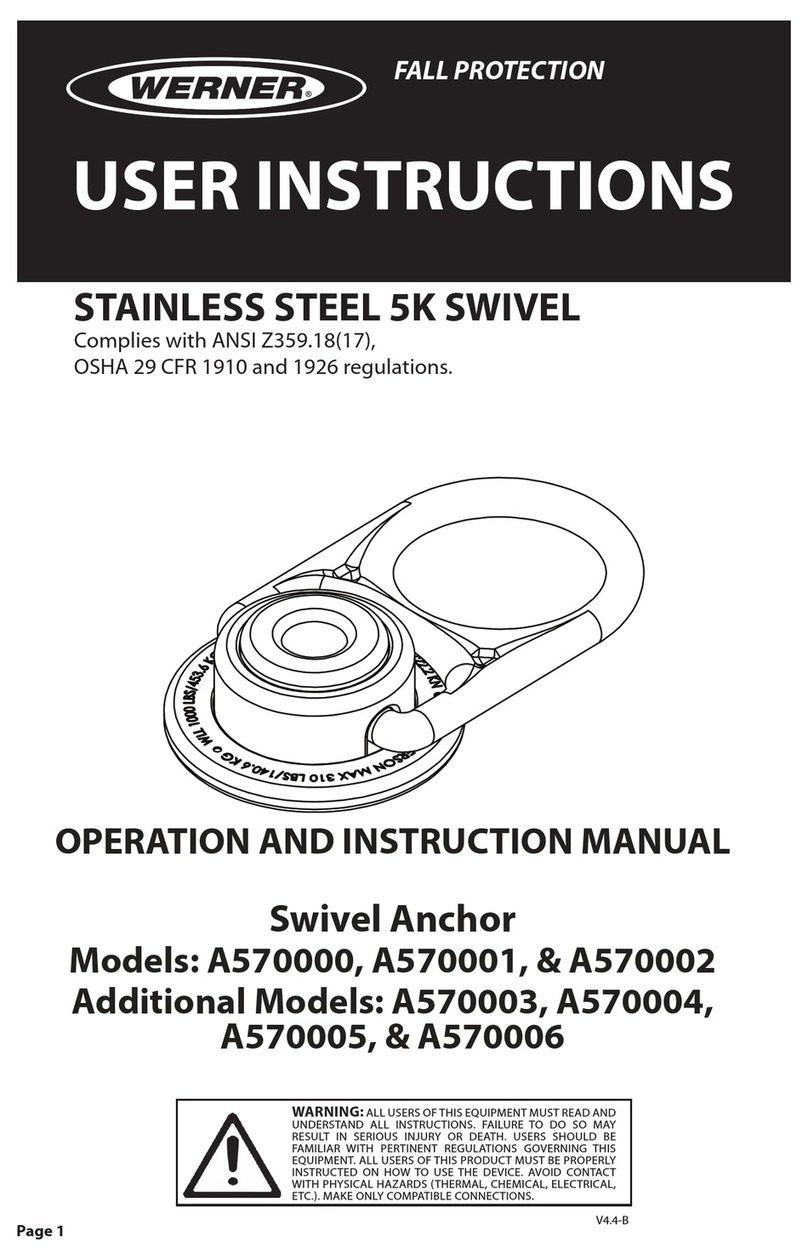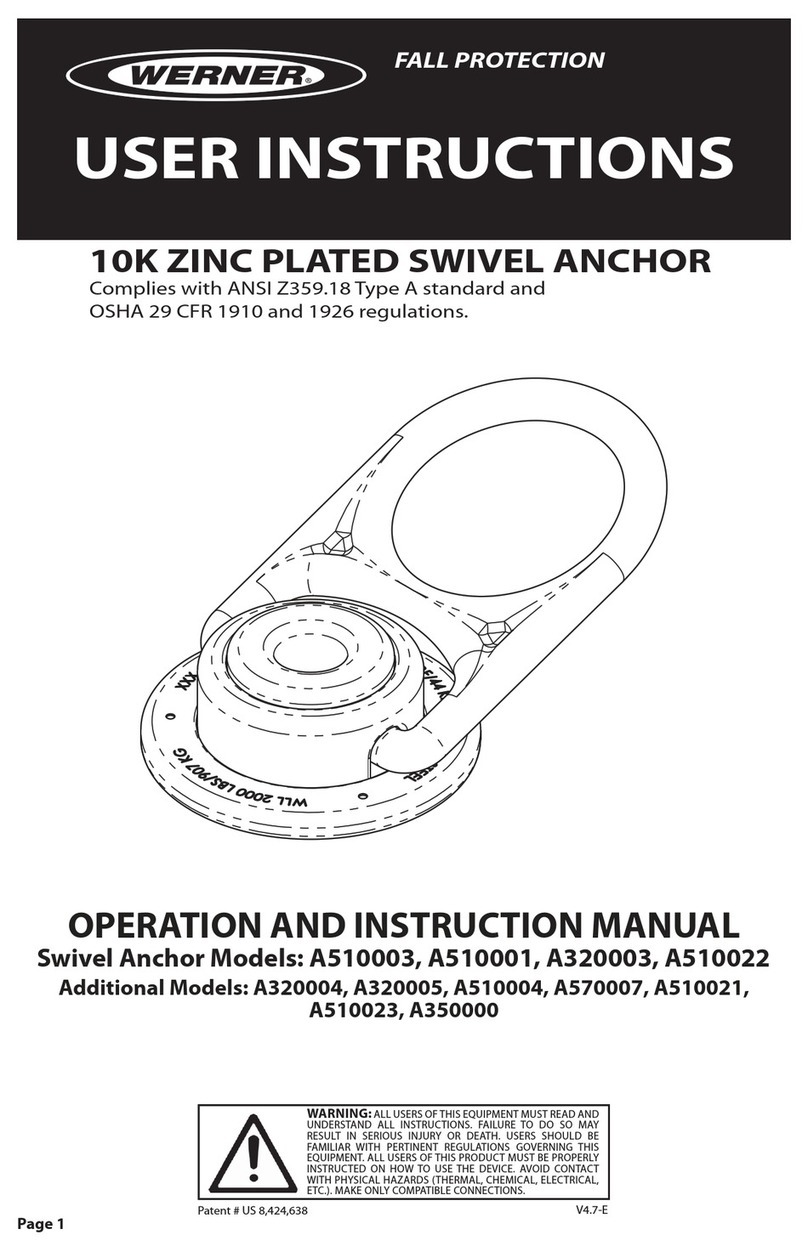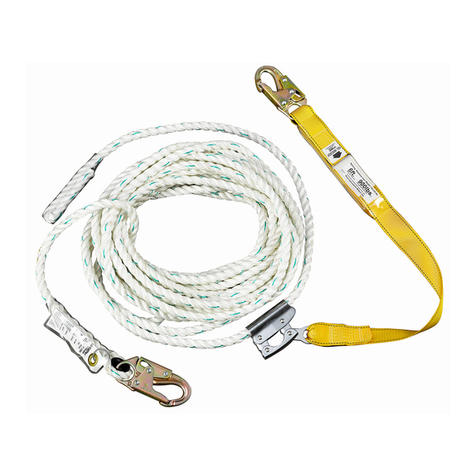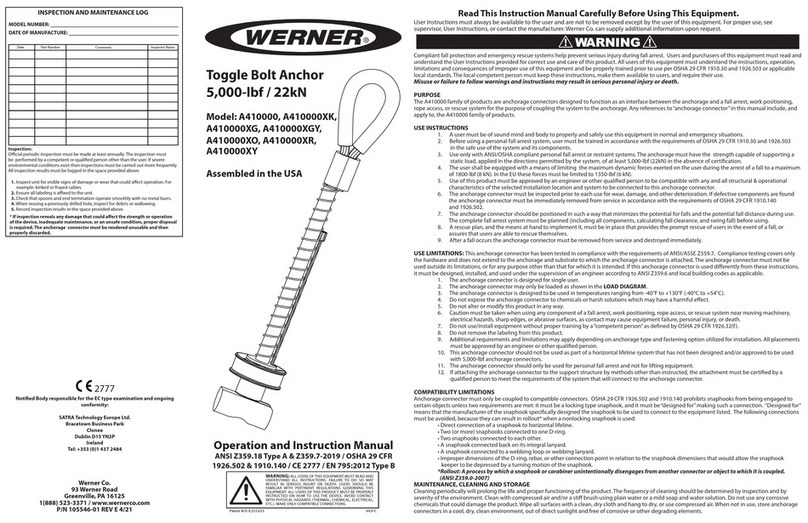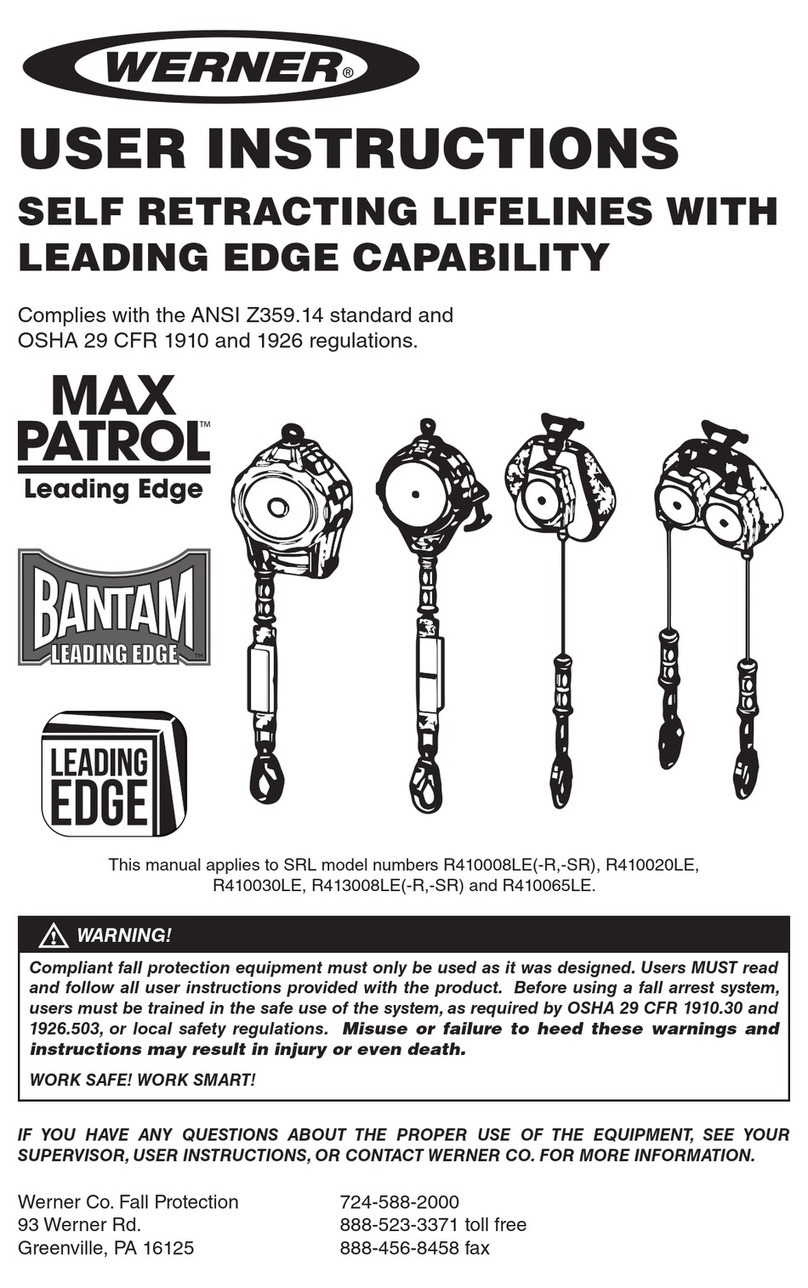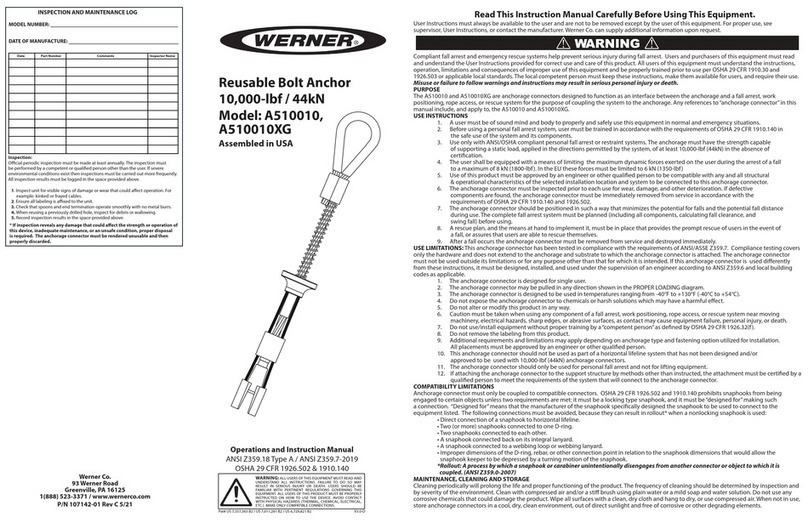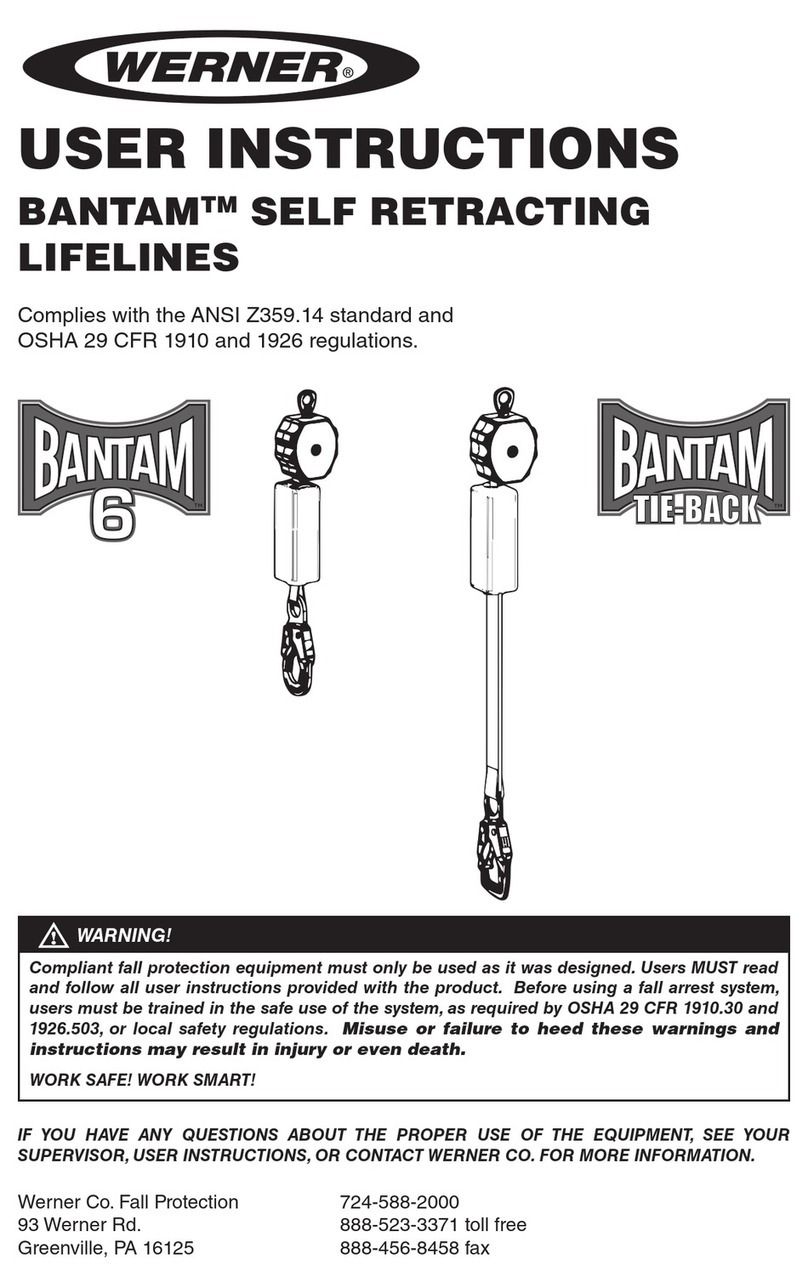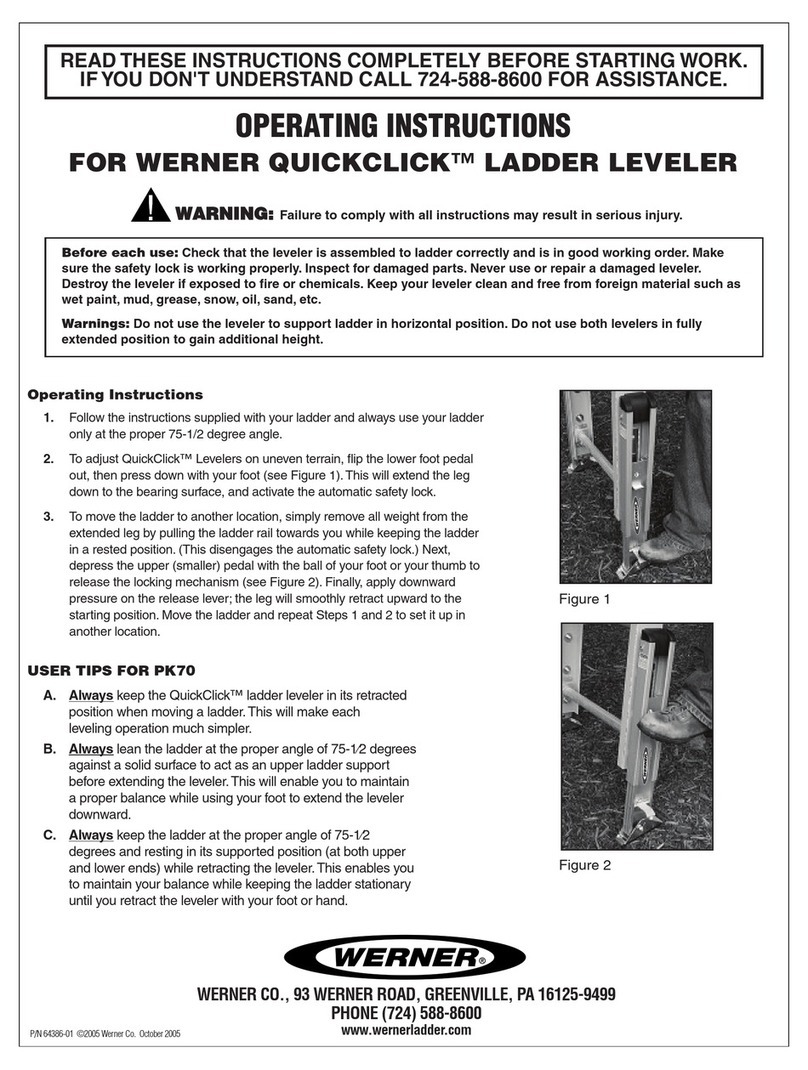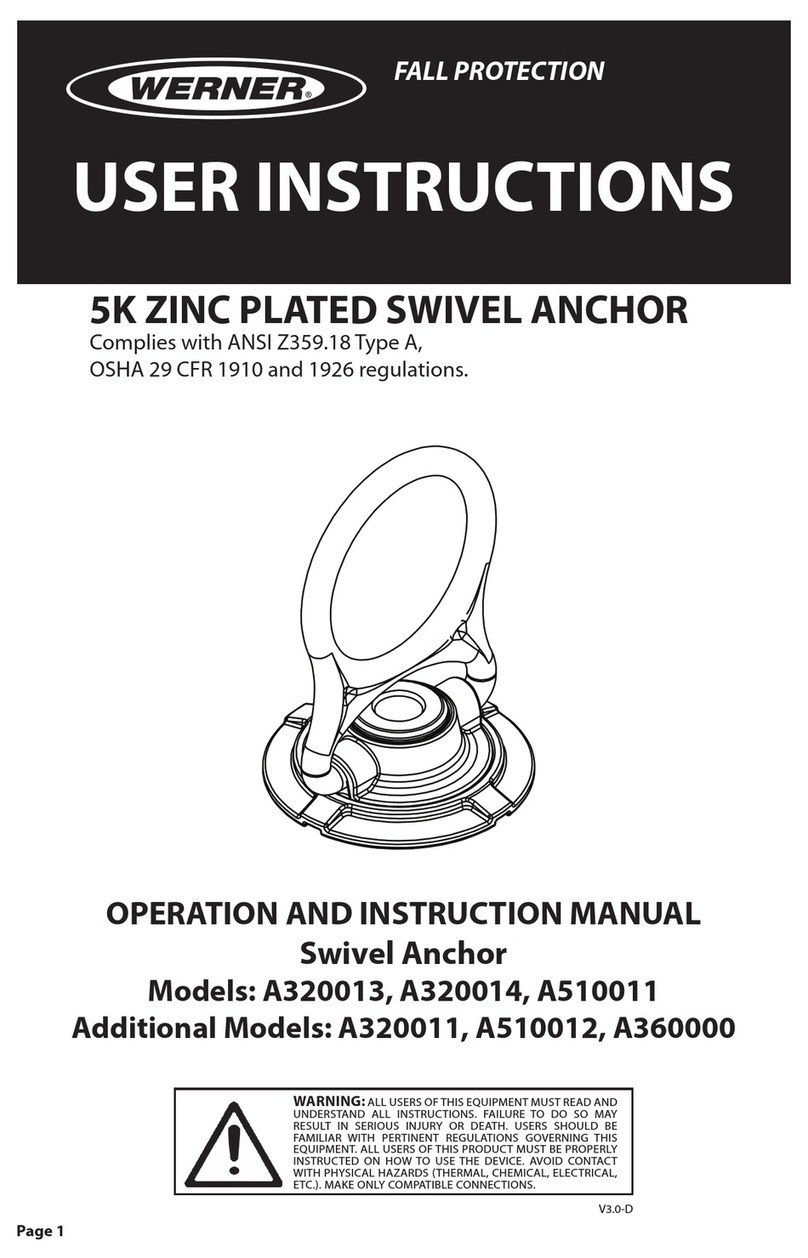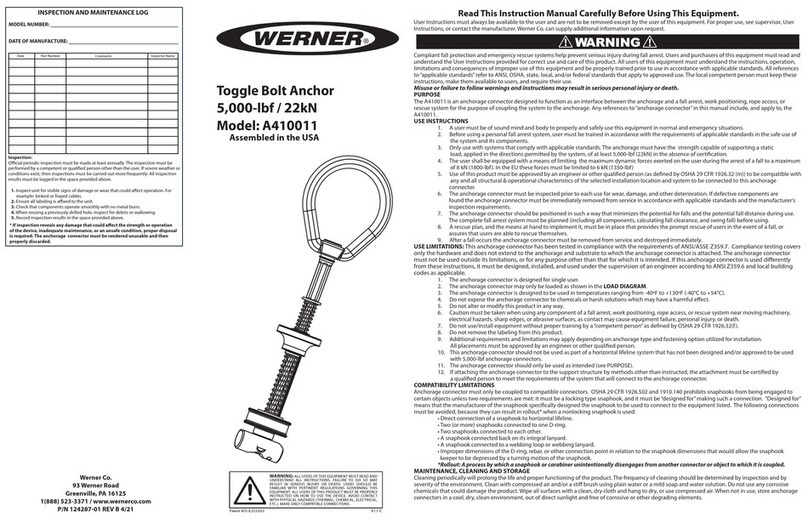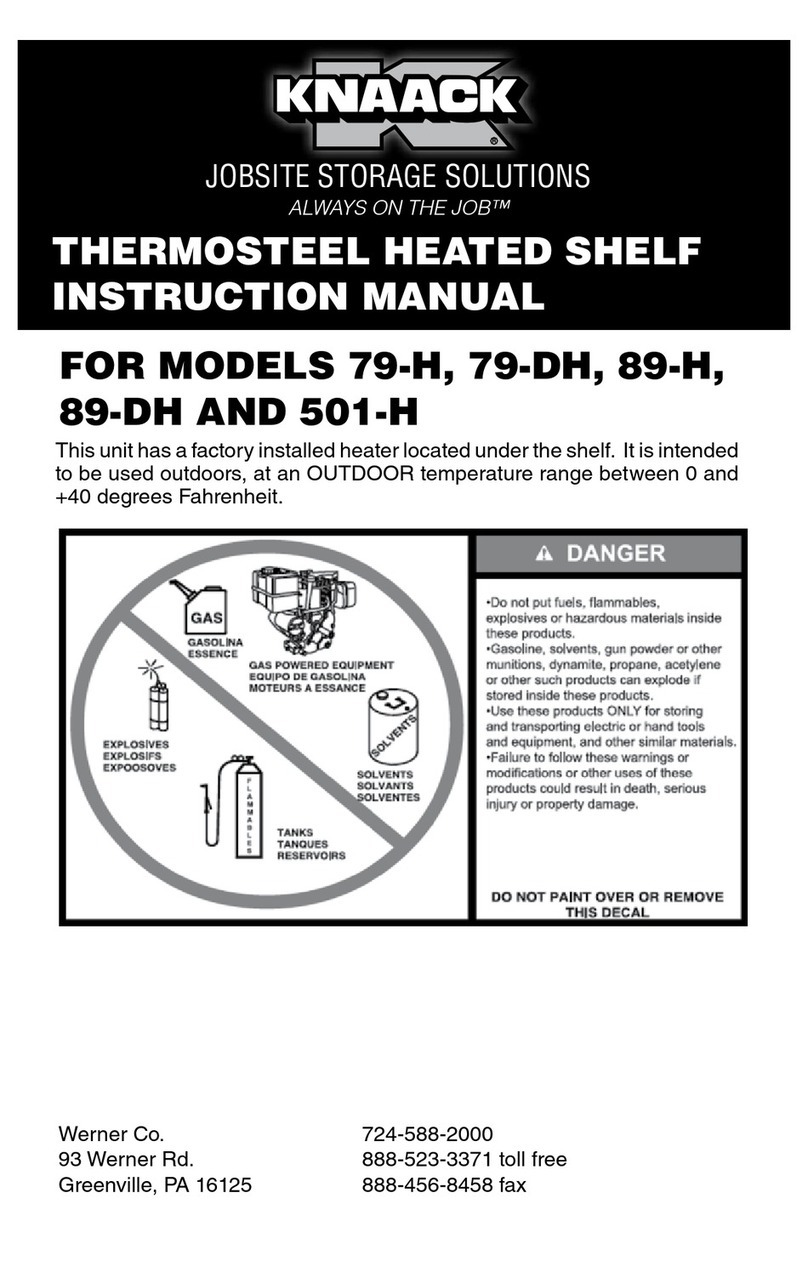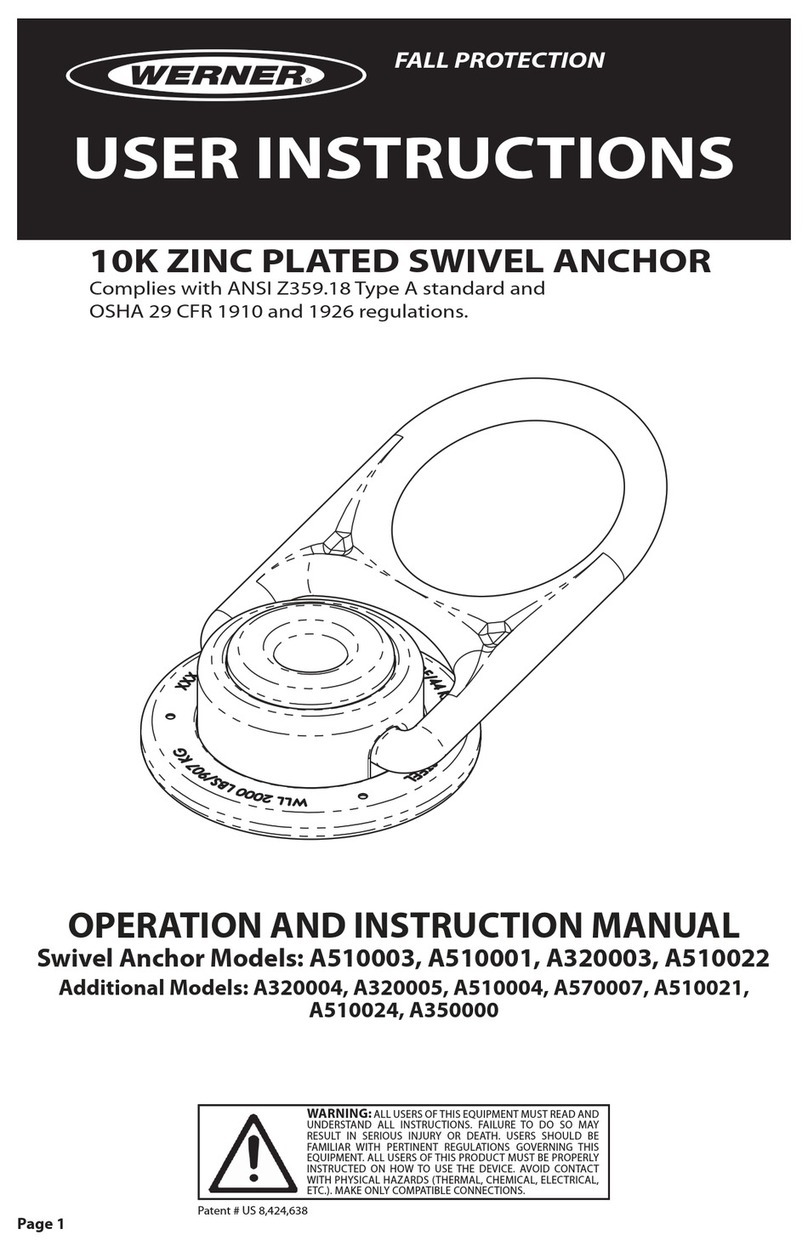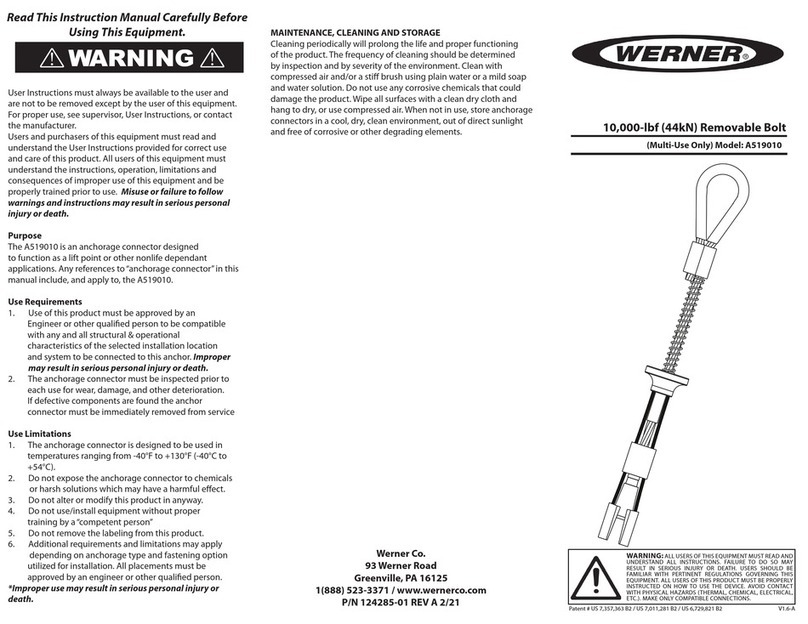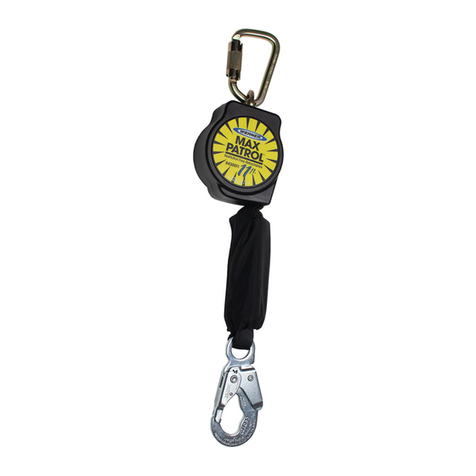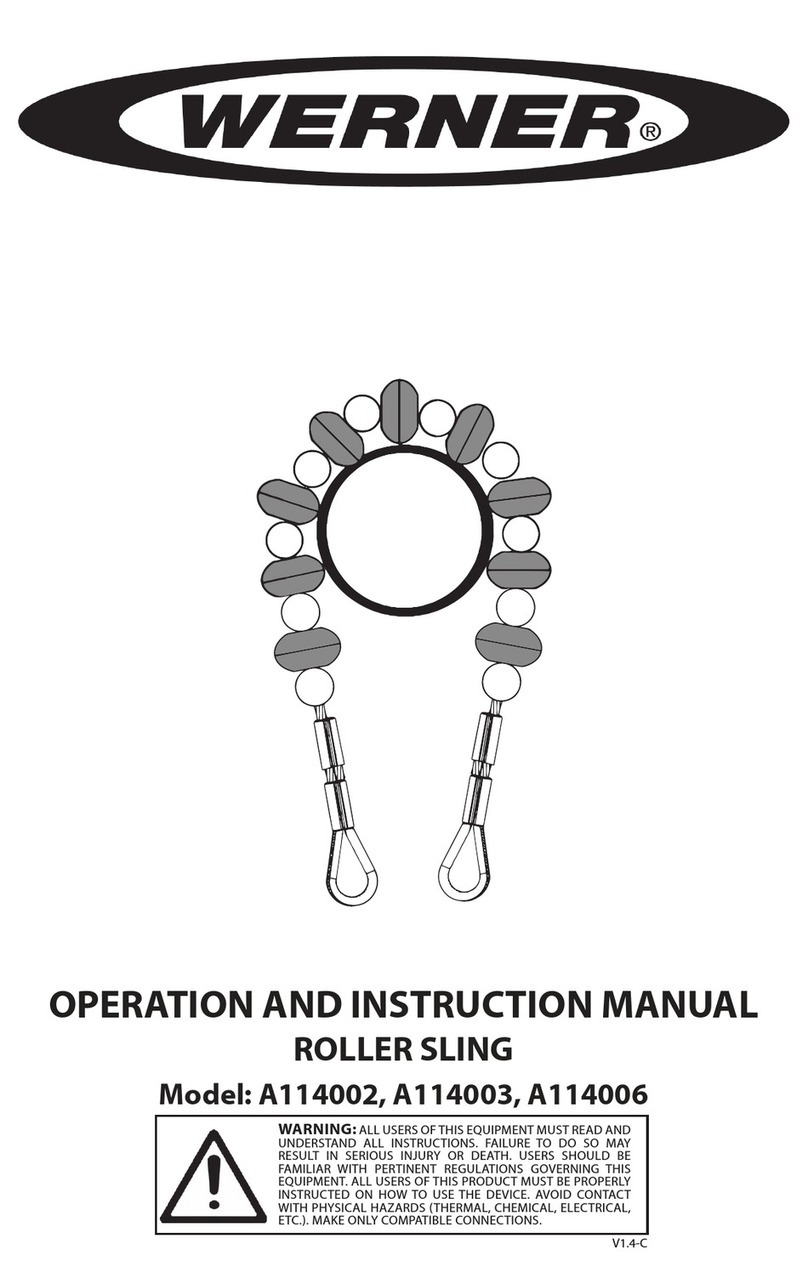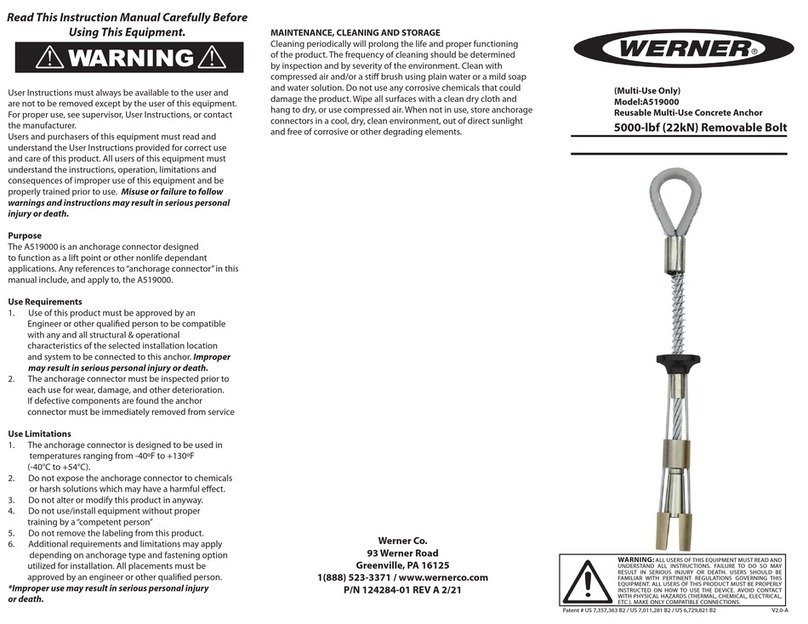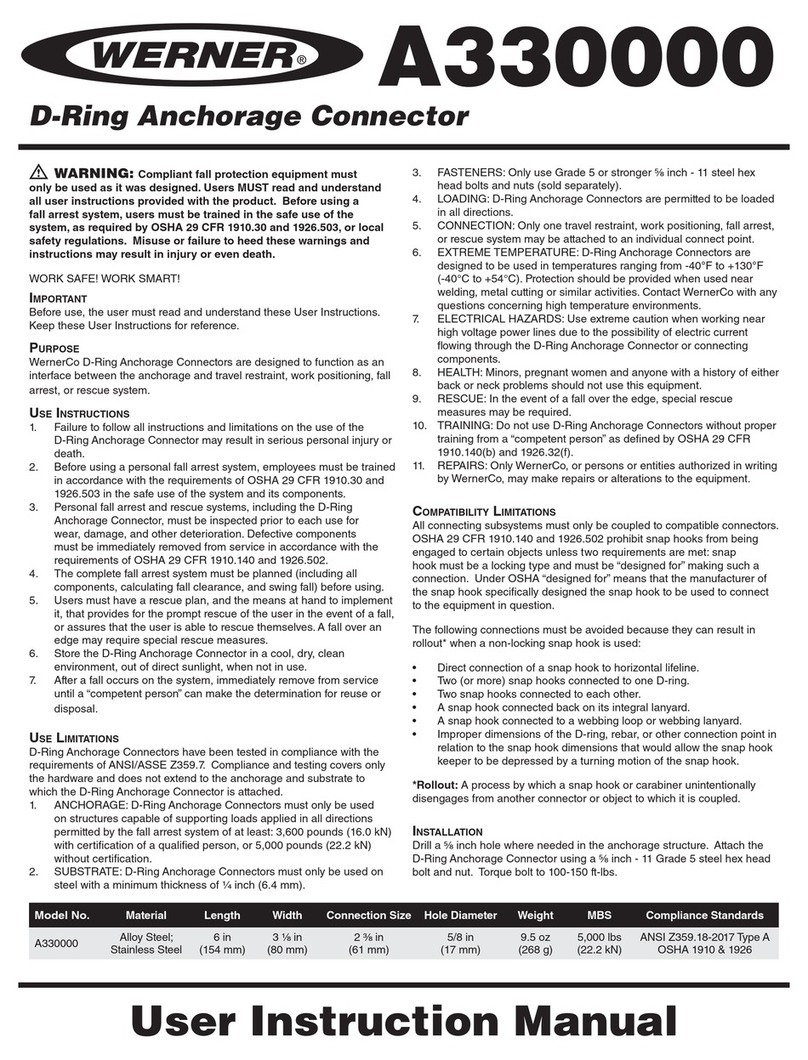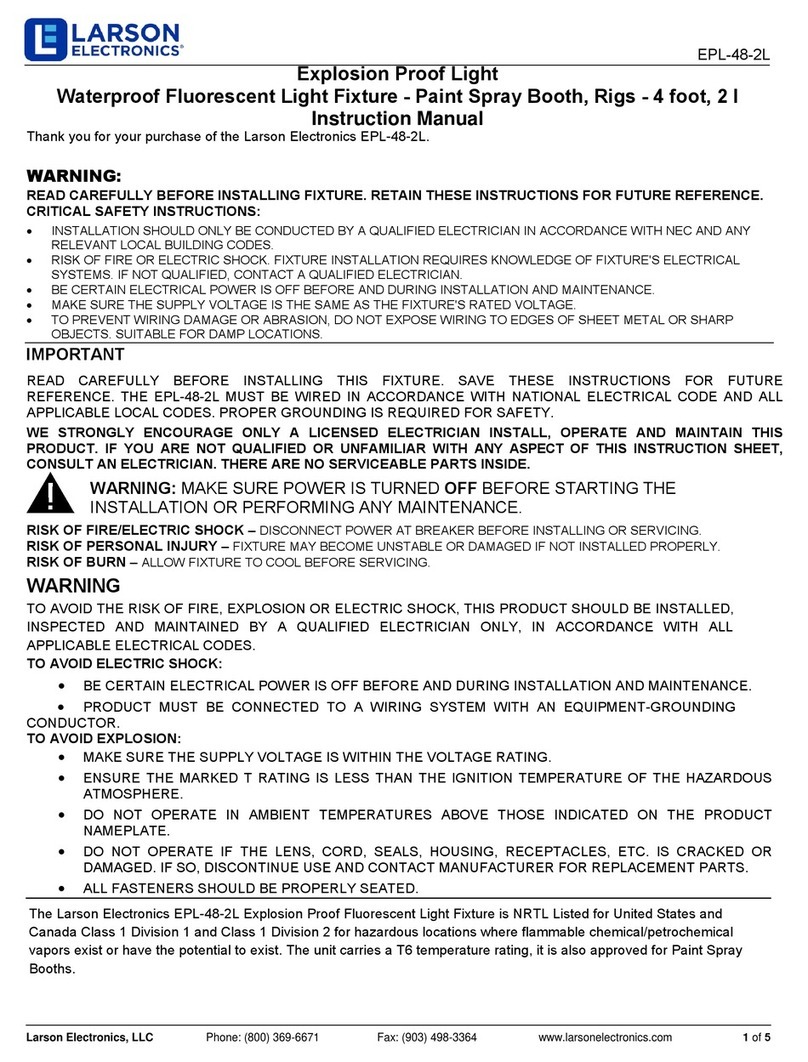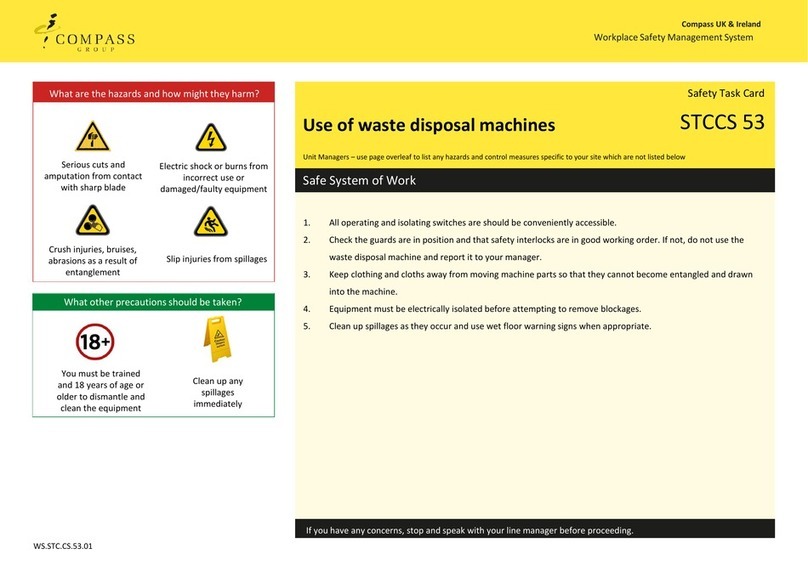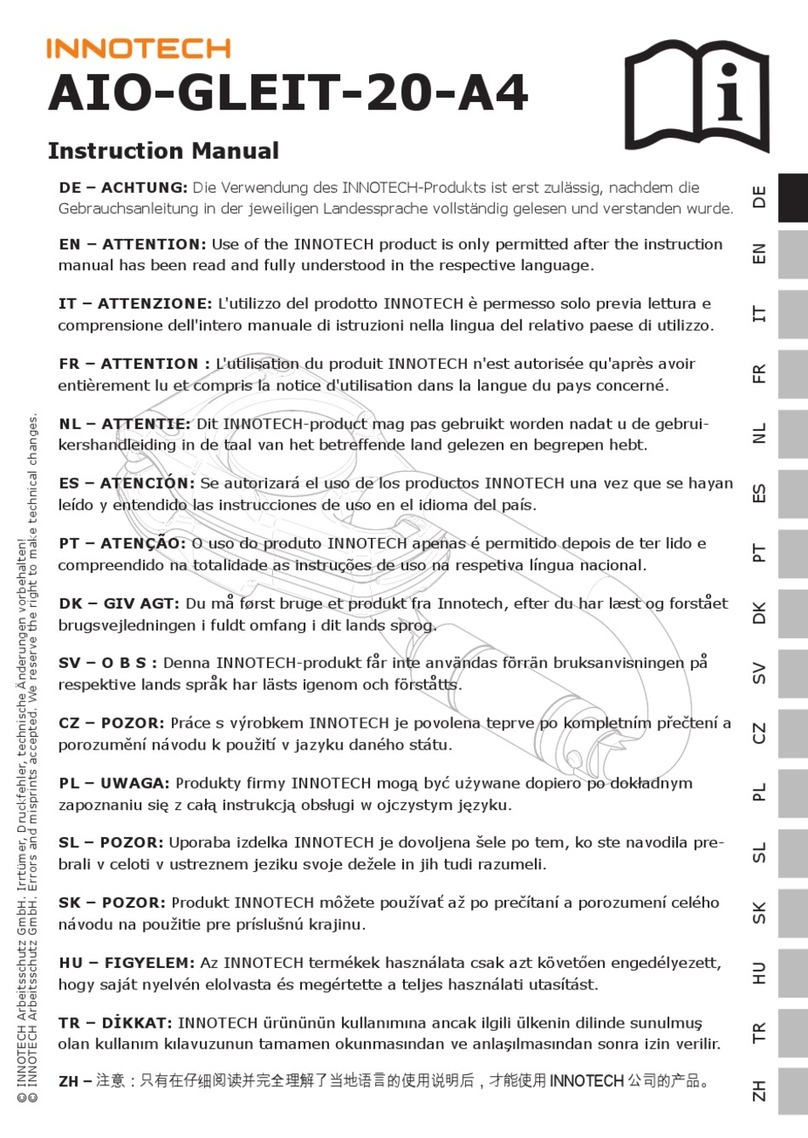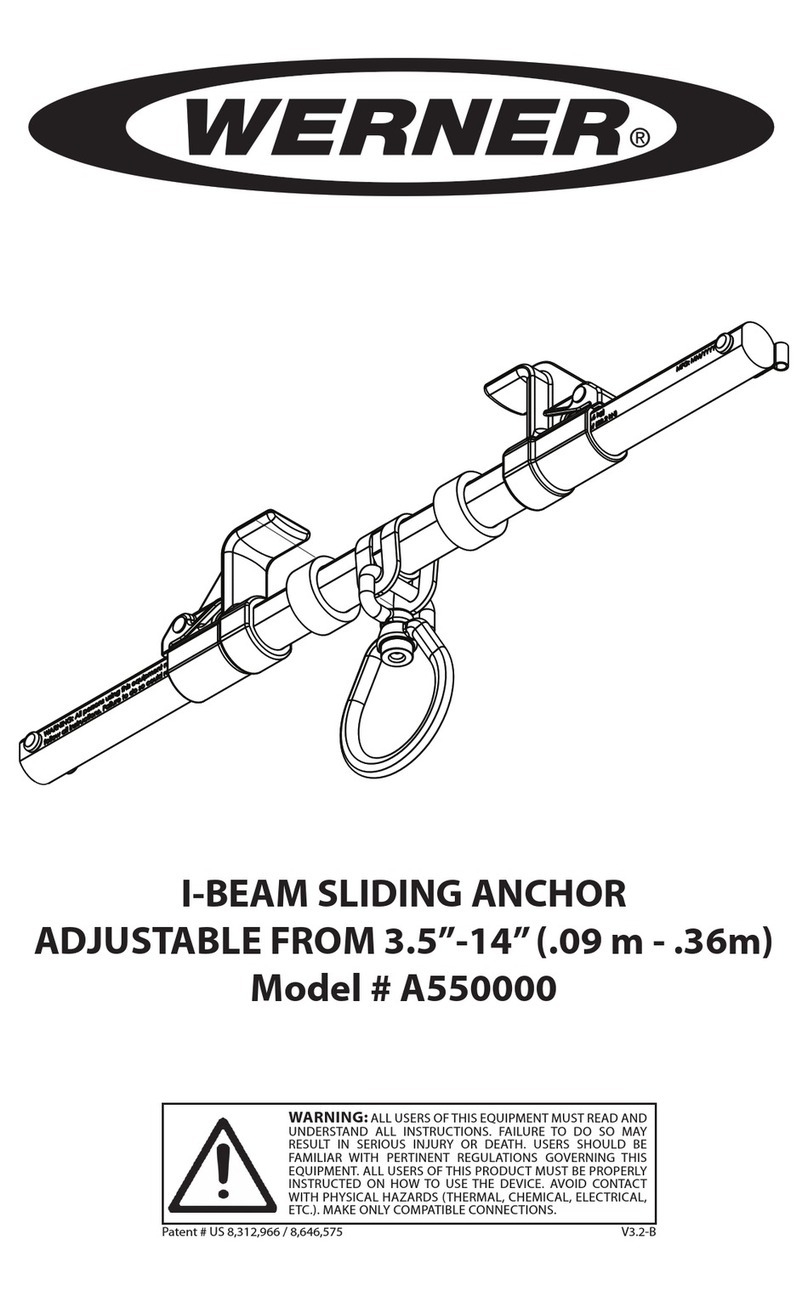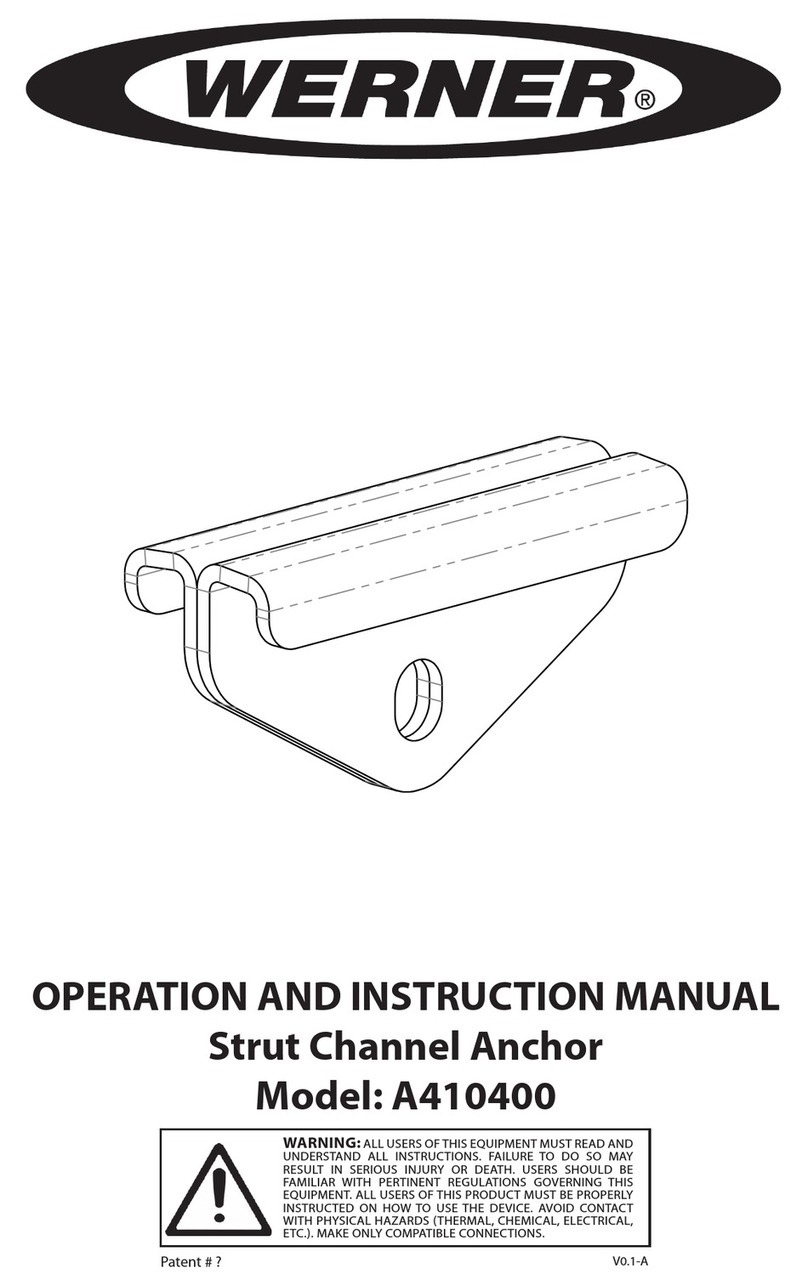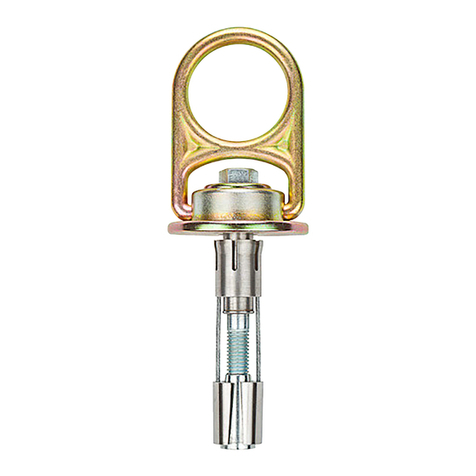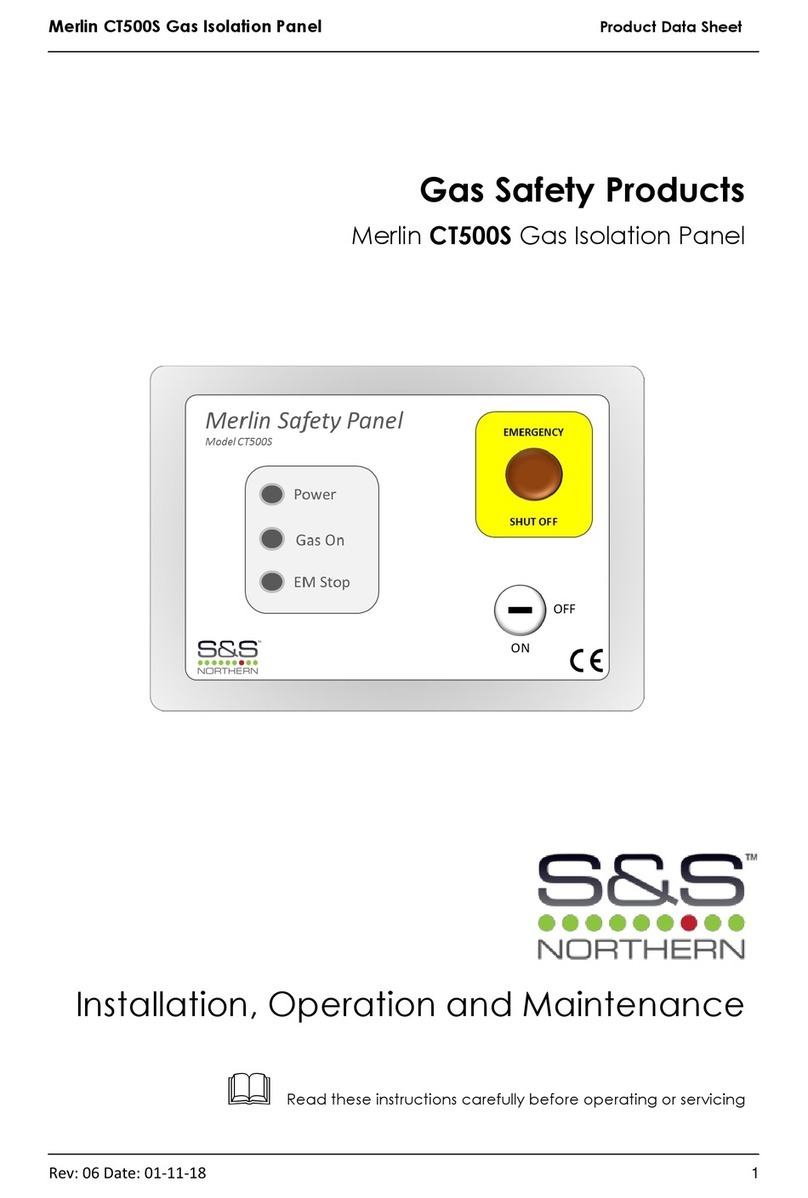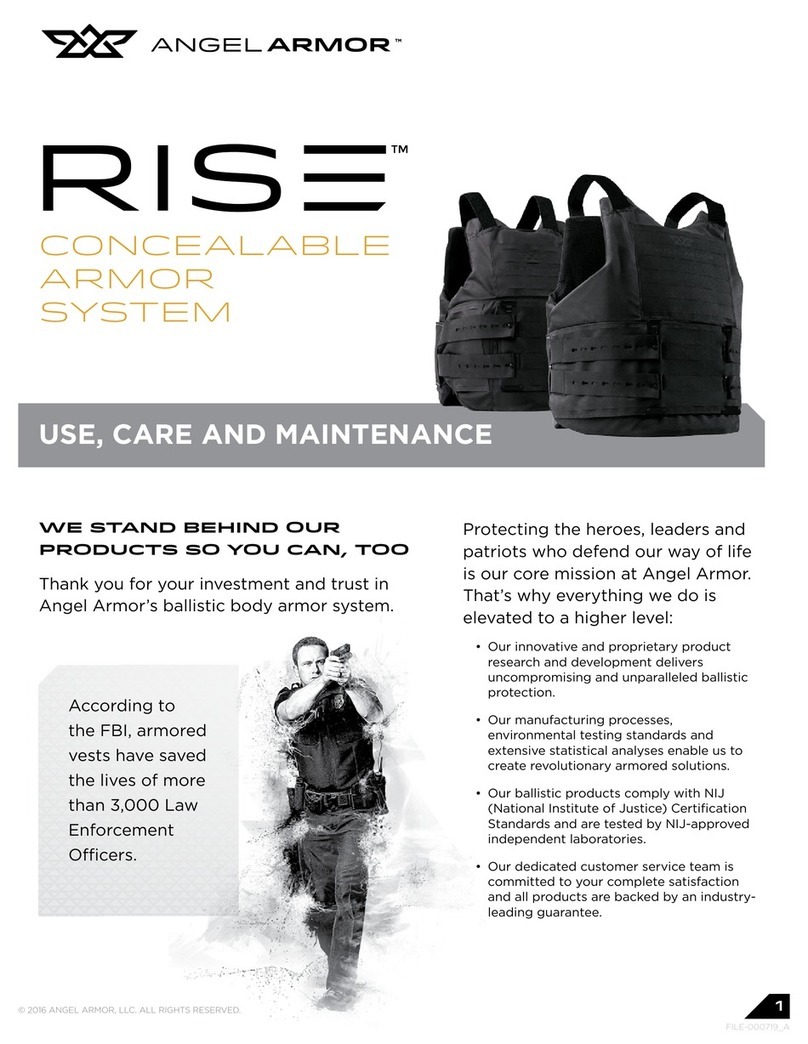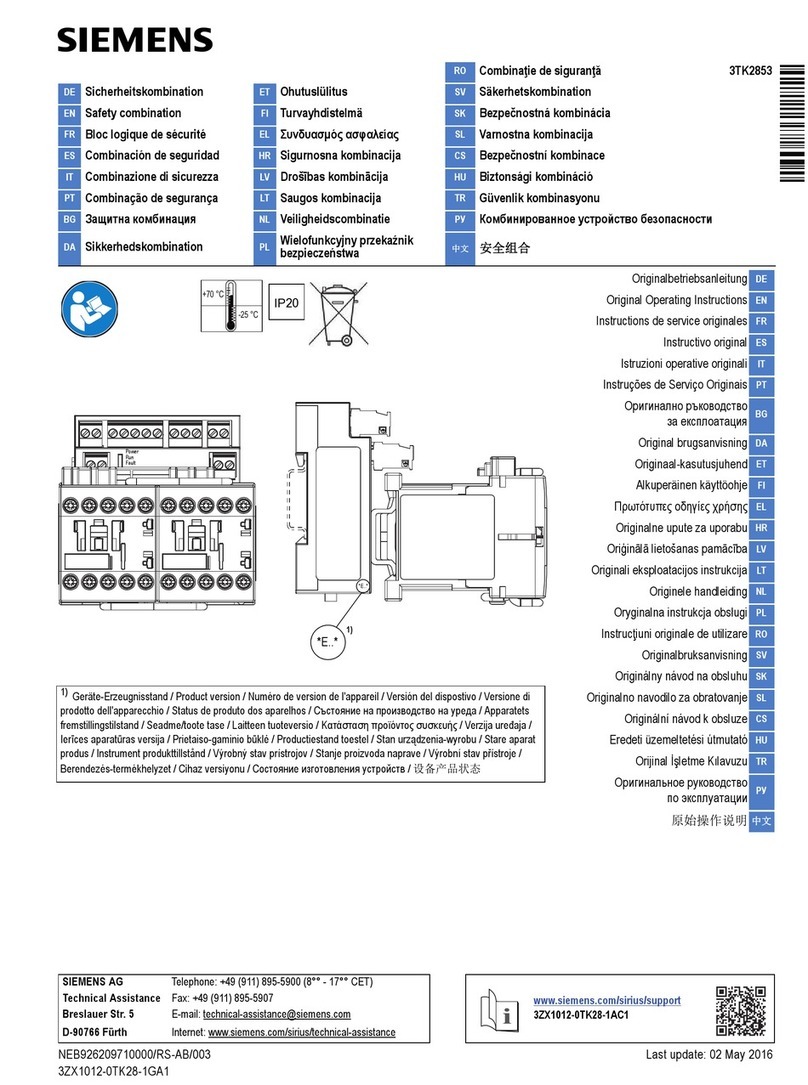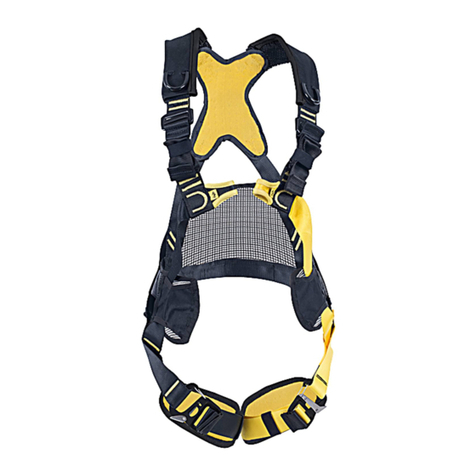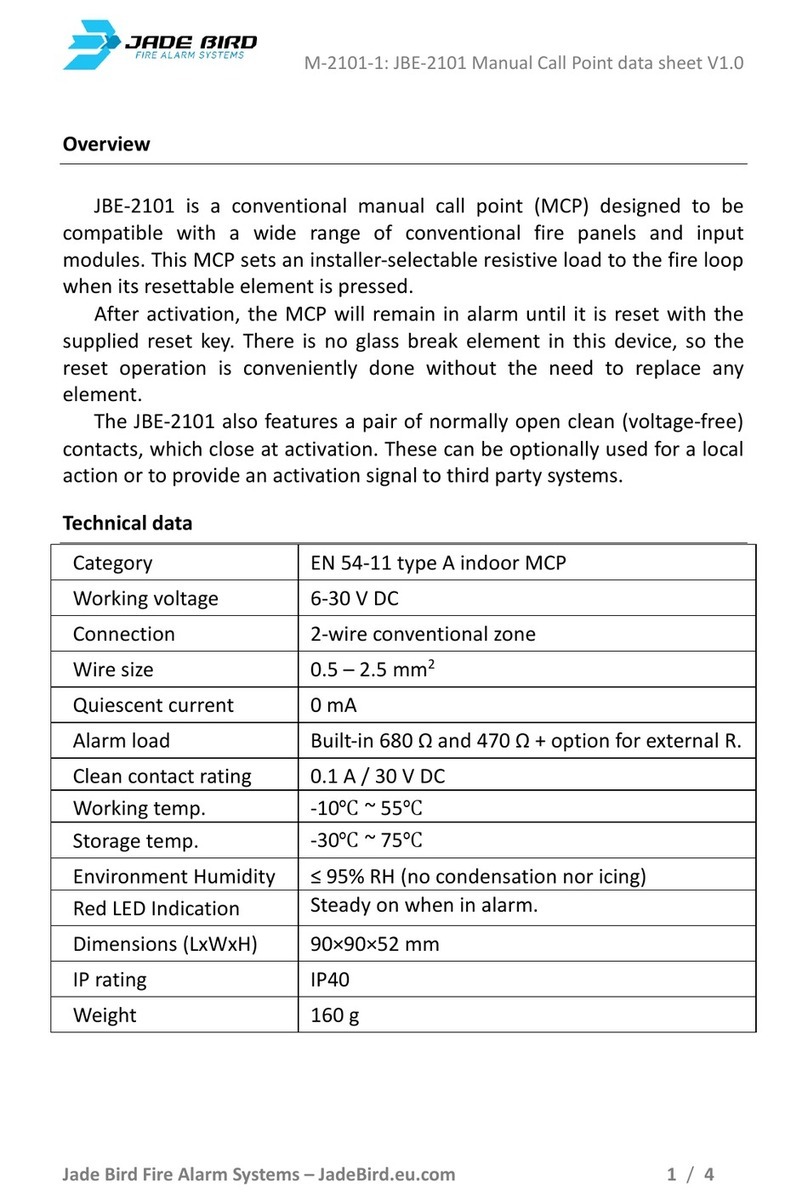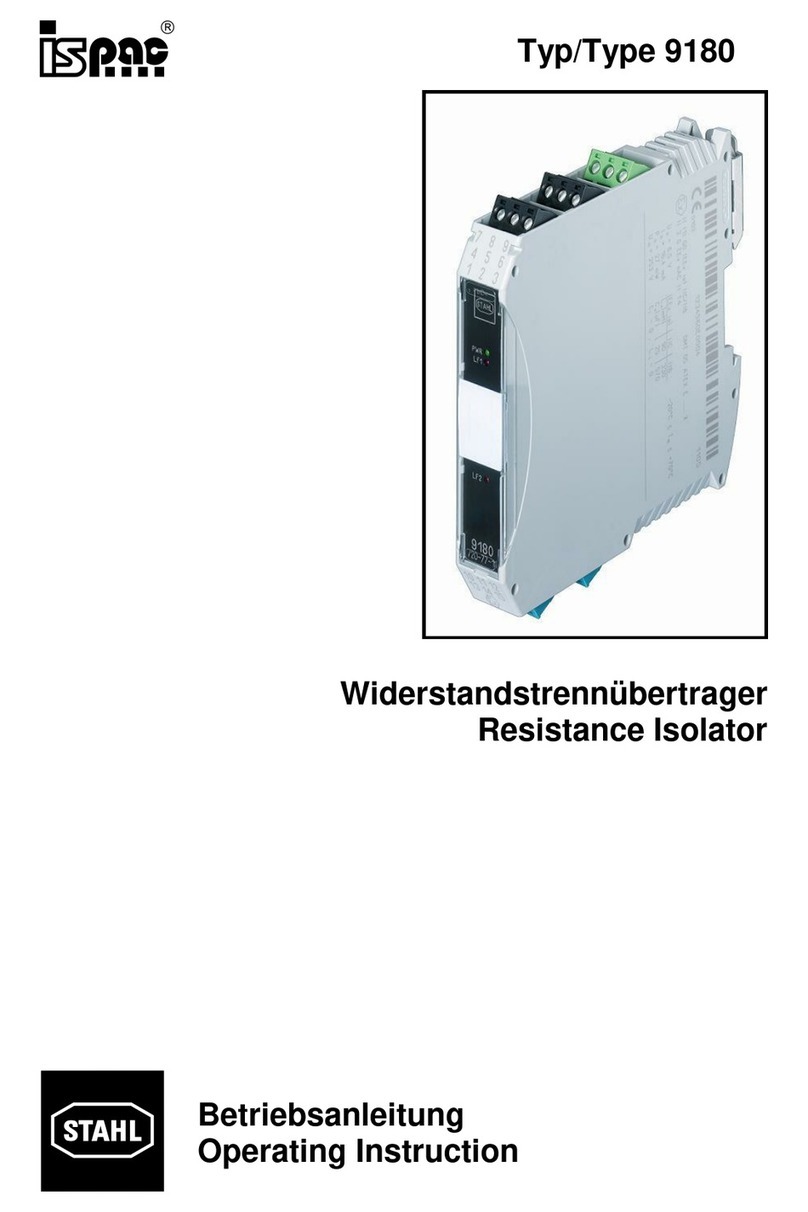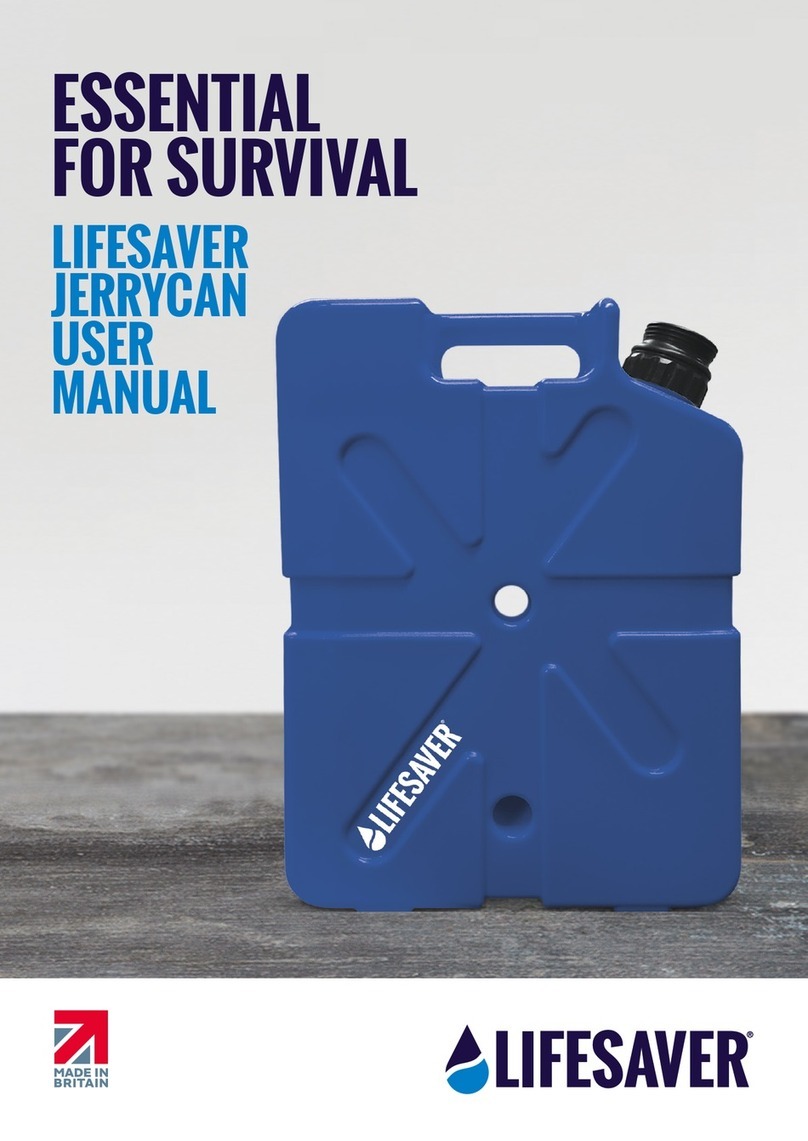
FRANÇAIS
Page 18
Avertissement :
Ce produit est juste une partie d’un système pour empêcher une personne
de tomber, la positionner au travail, restreindre son déplacement, faciliter
sa montée ou sa récupération. Il doit être correctement apparié à d’autres
composants pour former un système complet et fonctionnel. L’utilisateur
doit pour chacun de ces composants comprendre sa fonctionnalité et
suivre les instructions de son constructeur. Les normes CSA, ANSI et OSHA
exigent qu’une formation sur l’utilisation de ces produits soit fournie par
une personne compétente. L’utilisateur doit recevoir ces instructions, doit
les lire et les respecter, puis consulter la personne compétente qui supervise
son travail en cas de questions sur n’importe quelle partie des instructions.
L’employeur doit fournir de la formation sur la bonne utilisation, l’inspection
et l'entretien de tous les composants dans le système, et ces instructions
peuvent être utilisées dans le cadre de cette formation. L’équipement doit
être utilisé UNIQUEMENT en conformité avec ces instructions, les normes et
réglementations locales,les normes OSHA CSA et ANSI applicables, et le plan
pour la sécurité de l’employeur.
SI VOUS AVEZ DES QUESTIONS SUR UNE QUELCONQUE PARTIE DE
CES INSTRUCTIONS, SUR L’ÉQUIPEMENT LUI-MÊME OU SUR SON
UTILISATION CORRECTE,VEUILLEZ CONTACTER WERNER CO. POUR
EN SAVOIR PLUS.
I. Avant d’utiliser la corde de sécurité
Avant d’utiliser cet équipement, l’utilisateur doit suivre certaines étapes an
de s’assurer qu’il est en bon état et utilisable sans risques.
a. Inspection
Examinez l’ensemble de l’équipement soigneusement, quotidiennement
avant son utilisation, ou périodiquement via une personne compétente
autre que l’utilisateur. Vériez l’état de chaque composant. En cas où
des dommages, des points anormaux ou une usure excessive seraient
décelés, le produit doit être retiré du service.
1. Contrôlez d’abord les indicateurs de charge d’impact. Pour les cordes
avec blocs de choc, le couvercle transparent en plastique permet une
vision complète. Contrôlez la zone près de l’étiquette d’INDICATEUR
DE CHUTE si la couture d’absorbeur de choc est intacte. S’il y a une
quelconque indication de charge d’impact la corde doit être mise hors
service et détruite. Enlevez du service toute corde de sécurité qui
montre des indications de charge d’impact.
2. Contrôlez le sanglage pour déceler des coupures, abrasions, brûlures,
projections de soudure, ou décoloration ayant pu être causée par une
exposition chimique.




















